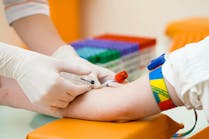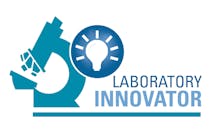Laboratory vacuum pumps are powering the future of biopharma and diagnostics
The global laboratory vacuum pumps market, valued at USD 1.8 billion in 2024, is poised for steady expansion, with projections indicating a compound annual growth rate (CAGR) of 6.5% through 2034.
By the end of the forecast period, the market is expected to surpass USD 3.1 billion, fueled by rising demand across healthcare, pharmaceutical, and biotechnology sectors.
This growth trajectory reflects the increasingly critical role that vacuum pumps play in modern laboratory operations—from sample preparation and filtration to distillation, drying, and the operation of sophisticated analytical instruments. As research complexity deepens and quality expectations rise, vacuum technologies are evolving to support enhanced precision, throughput, and reproducibility.
A key growth driver is the surge in diagnostic laboratory activity, particularly in response to global public health challenges and the need for high-throughput testing. Vacuum pumps are vital components in systems used for sample processing and analysis, making them indispensable in both clinical and research laboratory environments.
Pharmaceutical and biotech research is another major contributor. As these industries pursue breakthroughs in targeted therapies, personalized medicine, and advanced biologics, laboratory workflows increasingly depend on vacuum systems to ensure sterile, contaminant-free environments and support sensitive processes like rotary evaporation, lyophilization, and solvent recovery.
The expansion of the biopharmaceutical industry and the growth of vaccine production pipelines are also fueling demand. Vacuum pumps help maintain controlled environments and consistent quality during production, aligning with regulatory requirements and the industry's push for scalable, efficient solutions.
At the same time, the integration of vacuum technologies into advanced medical devices is opening new frontiers in healthcare innovation. Devices used in diagnostics, surgery, and critical care often rely on vacuum components for performance, further broadening the scope of the laboratory vacuum pump market.
However, market expansion is not without its challenges. Maintenance and operational costs remain a concern, especially for high-performance vacuum systems used in demanding applications. Downtime, repairs, and energy consumption can impact the total cost of ownership, prompting laboratories to seek more efficient, user-friendly alternatives.
Moreover, the complexity of some vacuum systems necessitates specialized training for proper operation and upkeep. This can be a hurdle for smaller labs or those in regions where skilled personnel are in short supply.
Despite these obstacles, the market outlook remains strong. Manufacturers are responding with innovations focused on energy efficiency, automation, and compact design—developments that not only reduce operational costs but also make vacuum technology more accessible and scalable.
As life sciences continue to evolve and the demand for high-performance laboratory infrastructure grows, laboratory vacuum pumps will remain a cornerstone of precision research and diagnostics. Strategic investments in product innovation, service models, and workforce training will be essential in unlocking their full potential in the decade ahead.





